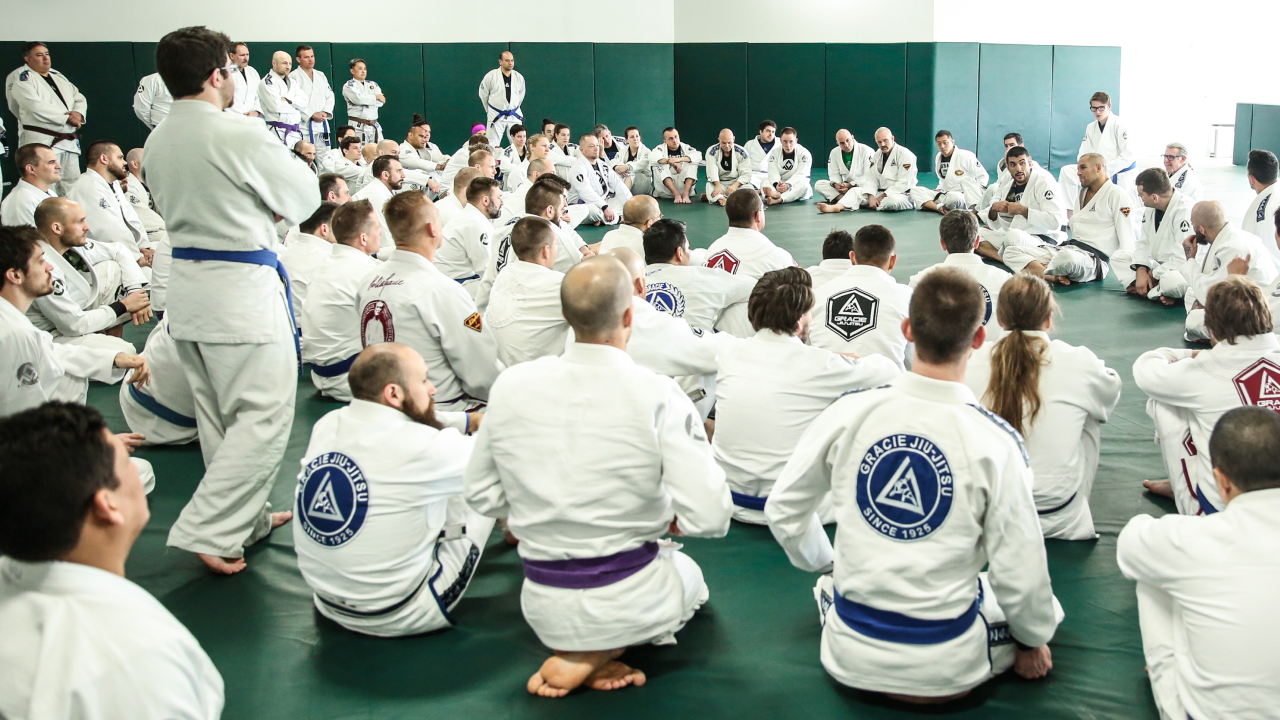- 23 Apr
- Posted at 13:39
- in Brazilian Jiu-Jitsu
One of the most important virtues that a white belt can learn is patience. Patience is a critical part of self-defense because it opens the door not only for better strategic reasoning, but also more efficient technique. Within the framework of jiu-jitsu, patience is the ability to maintain your composure in a high-stress environment so that you can think clearly, recognize opportunities for escapes or submissions, and preserve your energy. All of these things are vital for the most important principle of jiu-jitsu, which is survival.
All that said, this post is going to focus on applying that ability to be patient within the context of side control.
Getting stuck in side control can be a very uncomfortable position to be in, especially if you have a smaller frame and your opponent is bigger than you. As Robin Giesler of Gracie Ohio Jiu-Jitsu Academy notes in the above video, it can restrict your ability to breathe normally. You may even feel as though you’re suffocating. On its own, this sensation can cause a person to feel panicky, and that urge to flail around to escape is only going to exhaust what energy you have. It’s also going to give your opponent the opportunity to advance their attack.

 Control v. Dominance
Control v. Dominance
As Robin notes in the video, side control is usually the first step in a larger attack. While it’s certainly uncomfortable to be caught in side control, you are not necessarily in imminent danger of submission. Your opponent typically can’t do a lot of damage and at some point, they will have to stop applying downward pressure on you to mount a formal attack.
In most cases, the next position will be either mount or knee on belly. Your primary goals are to prevent your opponent’s next move and to escape.
Do the Culkin
For those who haven’t seen Home Alone, you’re missing out on one of the great kids’ movies of the early 90s. Additionally, you may not fully understand the reference. For those who haven’t seen it in a while, it’s worth the rewatch.
That said, the most famous scene from the movie is when young Kevin McCallister (played by Macaulay Culkin) puts aftershave on his face and screams. While screaming is not advisable, the motion of putting your palms on your cheeks is useful in this situation for two reasons. First, when you put your palms up to your face, your elbows create a frame. This will allow you to breathe easier while your opponent is on top of you. Second, your opponent may not be able to do a ton of damage from side control, but they can use their arms to strike your head and neck area. Having your arms tucked in will give you the opportunity to block those strikes.
Two Types of Leg Strength
Additionally, if you can place the foot of the side from which they are attacking on the opposite knee, this can help create a block and a potential source of structural strength for when you eventually make your escape. You should then firmly plant the other foot as close to your hips as possible because this leg will ultimately be like the jack of a car and utilize the strength of your hips.
This is going to give you the explosive power that you need to ultimately escape.
Bridging to Escape
As noted, your opponent will necessarily want to advance their position, and this will require them to reduce some of the pressure they are focusing on you as they redistribute their weight. As Robin details in the video above, this is your opportunity to bridge toward your opponent. In addition to the strength from your hips, you will also have the structures created by your crossed leg and arms to then create additional space to further separate you and your opponent.
Robin also notes that you will want to rotate in such a way that your top shoulder is closer to your opponent than the bottom shoulder because this will make you more difficult to move. From there, you can either put them into guard or you can move your hips away and make your escape.
As much as this is all about technique, it is also about timing and getting the timing right requires patience.

A Lesson from Relson
To illustrate his point, Robin tells the story of how Relson Gracie, the second oldest son of Grand Master Helío Gracie, approached the problem. Many years ago, one of Relson’s students kept getting caught in the north south position by a person who was significantly bigger than him. He complained to Relson, telling him that he couldn’t ever get out, so Relson got on his back and asked the bigger student to take north south control. He did, and then he waited.
And waited.
And waited.
Eventually, the bigger student just let go, and then Relson sprang into action. Relson knew that the north south position was not putting him in imminent danger. Rather than wasting energy trying to get out, he instead patiently waited for his opponent to present him with an opportunity to escape.
As Robin says in the above video, “The important thing that he was trying to explain to us was that it’s not just enough to know the technique to escape. It’s important to know when to use it. The right technique at the wrong time is the wrong technique.”